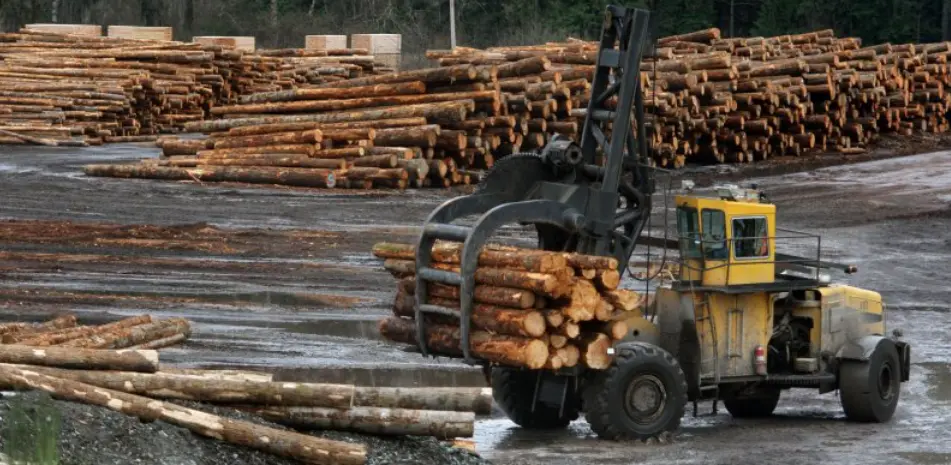
Trump’s new tariffs on lumber, cabinets, and furniture aim to protect U.S. jobs but may raise prices.
What Trump’s New Tariffs Mean for Lumber, Cabinets, and Furniture: A Bold Economic Shift
Published: September 30, 2025 | By: Rapido Updates
The Announcement: Tariffs That Could Reshape Trade
On September 29, President Donald Trump signed a proclamation imposing new tariffs on imported lumber, kitchen cabinets, bathroom vanities, and upholstered furniture. The move is part of a broader strategy to protect U.S. manufacturing and reduce reliance on foreign goods.
Starting October 14, a 10% tariff will apply to softwood lumber and timber, while a 25% tariff will hit cabinets and furniture. These rates will increase on January 1, 2026, to 30% for upholstered furniture and 50% for kitchen cabinets and vanities from countries that do not reach trade agreements with the U.S..
Trump justified the tariffs under Section 232 of the Trade Expansion Act of 1974, citing national security concerns. He argued that foreign wood products are weakening the U.S. economy and threatening critical infrastructure and defense capabilities.
The Reasoning: Protecting U.S. Industry and Jobs
According to the White House, the U.S. wood industry is facing closures, supply chain disruptions, and underutilization. Trump stated that the country may not be able to meet domestic demand for wood products essential to national defense, such as housing for personnel, munitions transport, and missile-defense systems.
In a post on Truth Social, Trump emphasized the impact on North Carolina, a state that has seen its furniture industry decline due to foreign competition. “We must protect our manufacturing process,” he wrote, calling the flooding of foreign products “a very unfair practice”.
Supporters of the tariffs argue that they will strengthen supply chains, create high-quality jobs, and boost domestic production. Some congressional Republicans have pushed for even higher tariffs to support home-state industries.
The Impact: Rising Costs and Global Reactions
The new tariffs are expected to raise costs for builders, retailers, and consumers. Lumber is a key material in home construction, and furniture prices have already surged due to earlier tariffs on Chinese and Vietnamese imports. The Bureau of Labor Statistics reported a 9.5% increase in living room and dining room furniture prices over the past year.
Canada, the largest supplier of softwood lumber to the U.S., is particularly affected. Canadian producers already face anti-dumping and anti-subsidy tariffs of about 35%. The Canadian government has pledged up to C$1.2 billion in aid to help its lumber industry cope.
Mexico and Vietnam, rising furniture exporters, are also impacted. Trump’s earlier tariffs on Chinese furniture—now as high as 55%—have shifted sourcing to these countries, which may now face similar duties.
The Exceptions: Trade Deals and Relief Measures
Trump’s proclamation offers relief to countries with existing trade agreements. For example, tariffs on wood products from the UK are capped at 10%, while those from the European Union and Japan are capped at 15%.
This selective approach aims to reward countries that cooperate with U.S. trade policies while pressuring others to negotiate. It also reflects Trump’s broader strategy of using tariffs as leverage in international trade talks.
Domestic manufacturers like Ethan Allen and La-Z-Boy may benefit from reduced competition, while retailers such as Wayfair and Williams-Sonoma could face higher costs and supply chain challenges.
The Debate: Economic Boost or Consumer Burden?
Economists and industry experts are divided. Supporters say the tariffs will revive American manufacturing and reduce dependence on foreign goods. Critics warn of inflation, reduced consumer choice, and job losses in sectors reliant on global supply chains.
The home furnishings sector, already in recession, may be hit hard. The American Home Furnishings Alliance argues that tariffs cannot reverse decades of globalization and may shrink the U.S. workforce.
As the January 1 deadline approaches, businesses are bracing for higher costs and potential disruptions. Whether Trump’s bold move leads to industrial revival or economic strain remains to be seen.